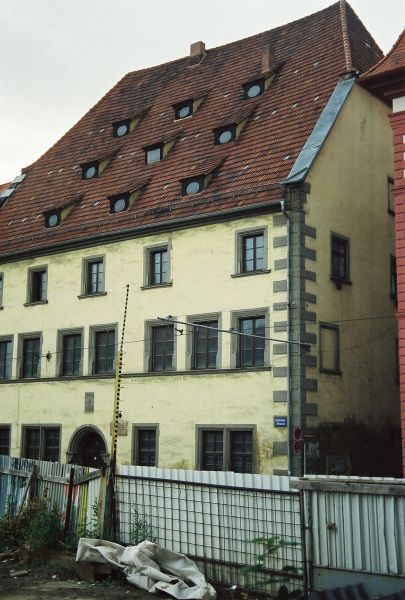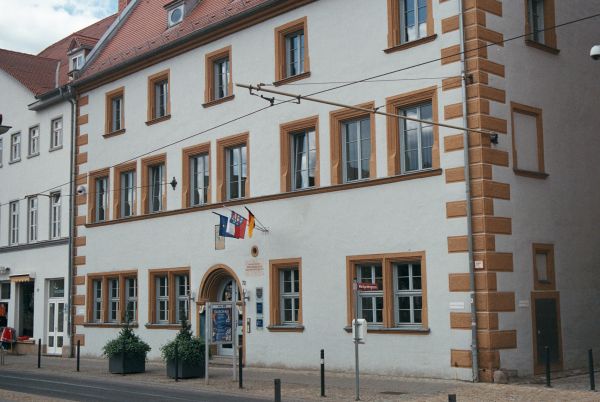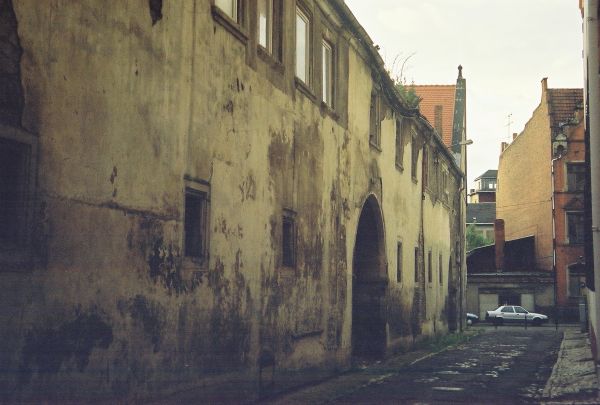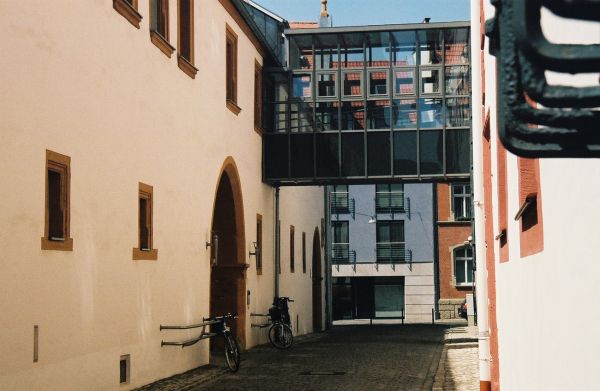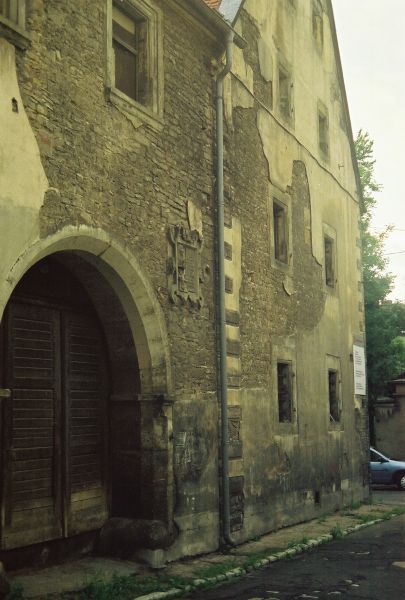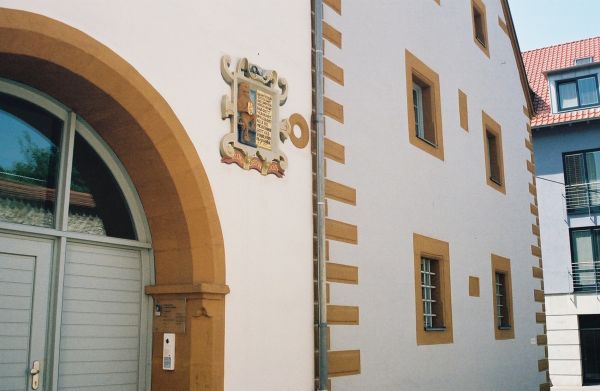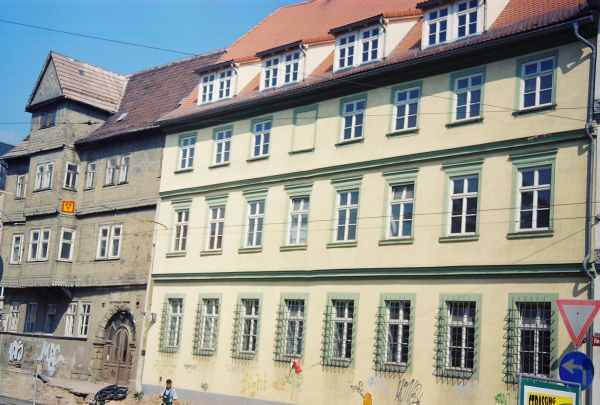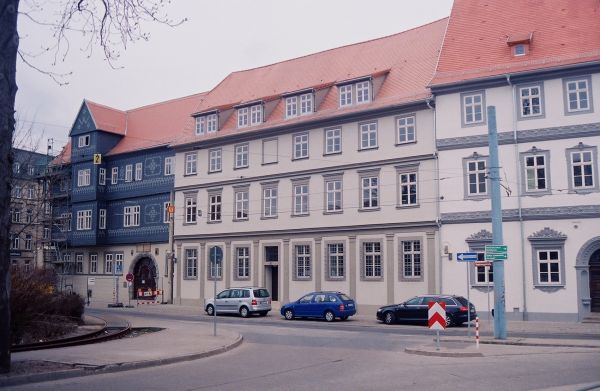The Regierungstraße
And look at palaces in the Regierungstraße. "Regierung" in German means "government," so one would assume that the departments of Erfurt's local government had their offices there. Like all of Erfurt's other important structures, the buildings in the Regierungstraße had been neglected by the bankrupt Soviet government.
The first building at Regierungstraße 72 was known originally as the Haus zum Güldenen Stern and served as the kurfürstliches sächsisches Geleitshaus, a royal consulate for the princes of Weimar. Germany, as we know it today, did not exist until 1871. Before that, it was a patchwork of near-bankrupt principalities. The poet Johann Wolfgang von Goethe served as a minister in goverment of Weimar and stayed in this building when he visited Erfurt.
The Markgrafengasse runs perpendicular to the Regierungstraße. Goethe's horse-drawn carriage must have entered the arched entrance and driven into the courtyard.

